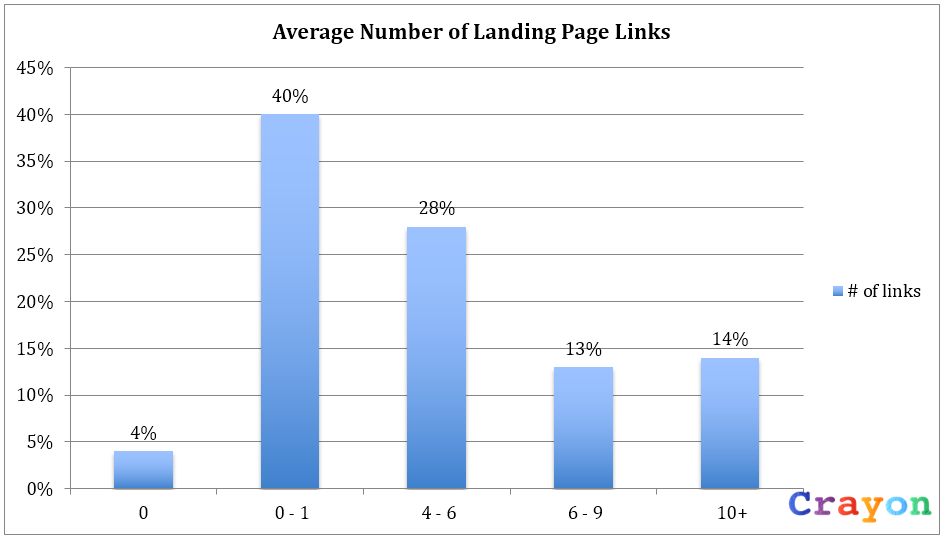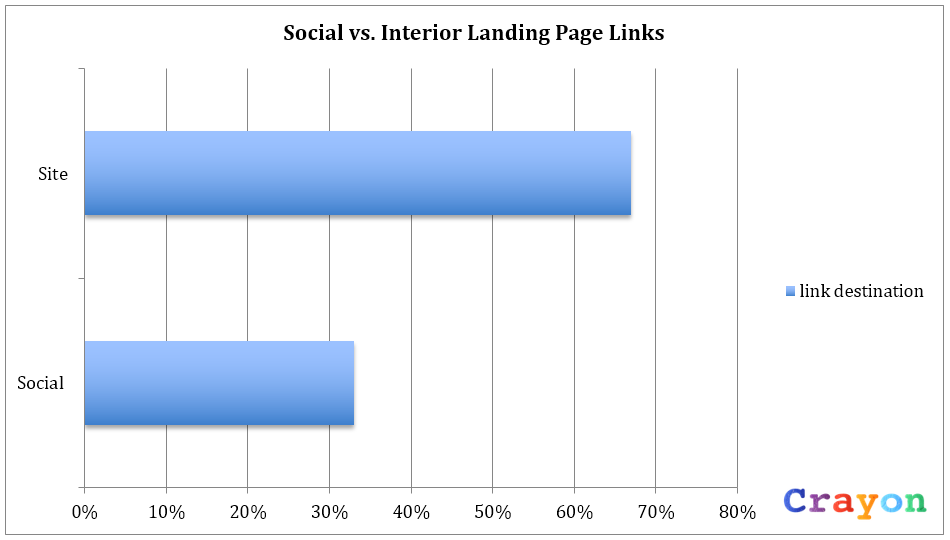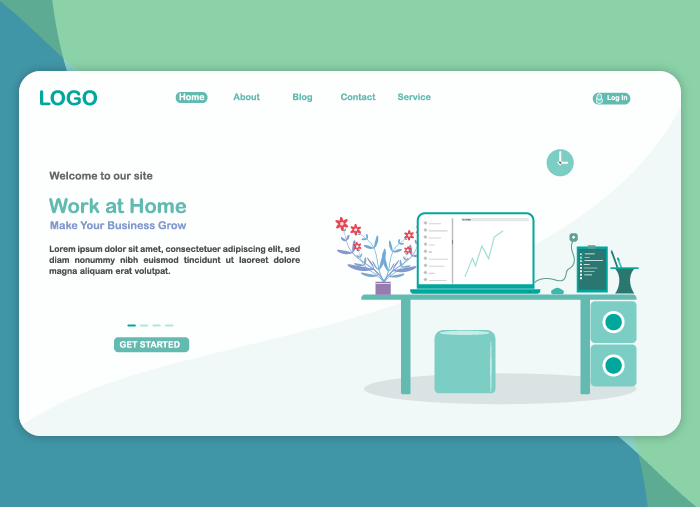For performance marketers, the purpose of using a landing page is to generate a lead, most often via form submission or phone call. While all marketers agree on the need to use landing pages, there is much debate about how to best design landing pages to maximize leads. More specifically, one of the common questions that comes up is how to incorporate links on a landing page, if you incorporate them at all.

There are already a number of great articles written from industry leaders such as Unbounce, WordStream and Kissmetrics about landing page best practices, each offering recommendations in regards to link usage.
For example, over at Unbounce, Eric Sloan says you should “drop the useless footer links”: “The trouble with leaving these links on the page is that it allows visitors to become distracted from the goal of the page.”
WordStream’s own Megan Marrs writes: “Great landing pages keep careful note of all pathways entering and leaving their page. It’s important that you limit exit points (in this case, hyperlinks) leaving your page. The goal is to funnel visitors down a desired pathway, and if links serve as points of departure from the funnel, they should be used sparingly.”
And the same wisdom is repeated in Kissmetrics’ Beginner’s Guide to Landing Pages: “The first major difference between your normal website and your landing pages is that your landing pages shouldn’t have your usual site navigation. Instead, the only clickable links should be your call to action, and possibly a link to more information for those who are undecided.”
Are Marketers Actually Following Landing Page Link Guidelines?
We wanted to learn more about the state of landing page links and how marketers are opting to use (or not use) links on landing pages. At Crayon, we have tons of data on how real landing pages are built, and real data doesn’t always mirror the best practices. Hence, we programmatically analyzed over 5,000 landing pages in an effort to help marketers benchmark themselves. We’ve compiled the latest statistics on the state of landing page links for you to consider and incorporate into future testing.

First, a Few Notes About The Data:
- We analyzed 5,000+ landing pages from domains in the Alexa top million
- All landing pages are currently being used for direct response marketing
- All pages have paid media driving traffic to them consistently
- Over 35 industries are included in the data set
Key Findings: What Does The Data Say?
- 96% of landing pages feature at least one link, leading prospects off-page! – TWEET THIS STAT
- 14% of landing pages feature 10 or more links, leading prospects off-page – TWEET THIS STAT
- 33% of links featured on landing pages lead prospects off-page to social media pages – TWEET THIS STAT
- The most popular landing page links include Logo, Privacy, Contact, About and Twitter – TWEET THIS STAT
Marketing Takeaways: What Does It All Mean?

A whopping 96% of landing pages feature at least one link, leading prospects off-page. Most of these pages, 40%, feature 1-3 links, followed by 28% with 4-6 links, 13% with 6-9 links and 14% with 10 or more! Only 4% of landing pages have no links at all. Clearly, marketers disagree about how many links to feature on landing pages.
- 0 links – The purpose of a landing page is to generate a response on-page (usually a phone call or form conversion). Any link leading users off-page can serve as a distraction, which is why it’s interesting to note that only 4% of landing pages are designed without links. While 96% of marketers include links, do the 4% know something that the rest of us don’t?
- 1-9 links – 81% of marketers include anywhere from 1-9 links on landing pages. In the next section, we’ll highlight the most popular links featured, but what’s interesting to note here is the range of links being featured: 40% of marketers include 1-3 links, yet a rivaling 41% of marketers include 4-9 links, showing a clear divide as to “best practices.”
- 10+ links – As stated, the primary purpose of a landing page is most often to generate a form submission or phone call. Therefore, it’s surprising that 14% of landing pages offer users 10 or more links leading off-page. While featuring 10 or more links at first glance seems like an undisciplined landing page strategy, there are certain industries that require numerous links, while others (social media) encourage them. The good news is that there’s a lot of room for this segment to test!
Most Popular Landing Page Links:

The top two most popular landing page links include the Logo (usually placed top left, leading users back to the homepage), and Privacy link. While the logo link is a staple of traditional website navigation, inclusion on the landing page could impact conversion attribution data. For instance, if a user navigates to a landing page, clicks the logo link to the homepage, and then calls the homepage number as opposed to the landing page number, are you able to attribute the lead to the right source? What about if a user fills out a form on the home page after navigating off your landing page?
For marketers that aren’t able to attribute leads accurately if users navigate and convert off-page, running a test could improve conversion rates and get you more of the credit you deserve!
Privacy links are most often the result of Legal teams, and in some industries non-negotiable. If you haven’t had an in-depth conversation with your Legal/Policy team about links, it’s worth taking the time. Ask if you can include certain verbiage in the footer as opposed to a link and recommend a test. After all, companies might be willing to adjust their policies if it means an increase in conversion rate.
15 Most Popular Landing Page Links

Expanding the data shows that the 15 most popular links to include on landing pages include: Logo, Privacy, Contact, About and Twitter. For marketers that are always battling the “everyone has to include privacy links” response from Legal, data shows that 52% of landing pages do not include privacy links!

Also interesting to note that by percent share, Logo and Privacy links account for 46% of all landing page links. The majority of marketers do not include social media links on their landing pages, as Twitter represents 6% of landing page links, Facebook represents 5% and LinkedIn just 4%.
- Site links – On average 67% of landing page links lead users to additional company pages like the privacy page. A few popular reasons for additional site links for users include added credibility, to provide more information or adhering to legal policy.
- Social links – While providing site links keeps users relatively focused on the company, offering social links brings users to a completely different experience. If a user visits a landing page and then clicks a Facebook link as an example, they’ll be brought to their personal Facebook profile and at risk of countless new distractions. For some industries, however, providing social links is a way of showing credibility or enhancing brand perception.
Review

Landing pages exist to generate leads, most often form submissions or phone calls. The goal is to generate the lead on-page. While offering links off-page seems counterintuitive, testing is the only answer. For instance, including a privacy link in your footer may not impact conversion rates. For some, including a social media link may actually increase conversion rates.
Landing page links can be conversion enhancements, distractions or non-impacting but the most important part of your landing page strategy is to always be testing, so if you haven’t tested your links strategy in a while then now is the time!
This article was contributed by the team at Crayon. Crayon is the most comprehensive collection of marketing designs on the web. To learn more visit Crayon.co, it’s free!








